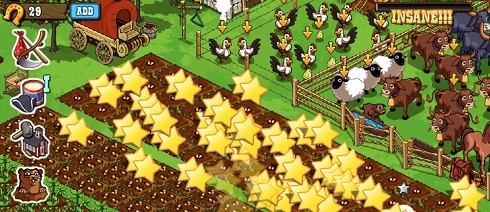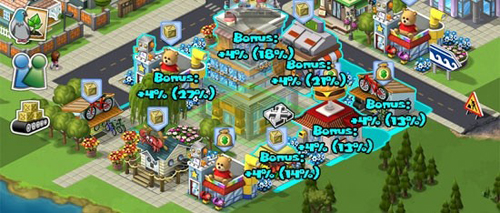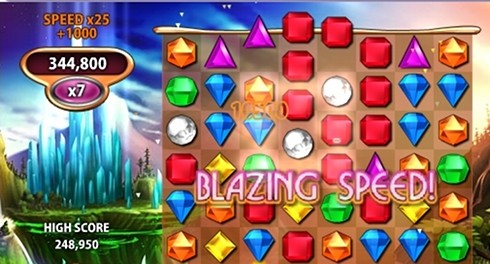设计师关于增加Facebook社交游戏深度的5点建议
尽管不少人总指责社交游戏“并不是真正的游戏”,但游戏设计师Henric Suuronen却认为社交游戏还可以更有深度,他最近公布了几点关于社交游戏设计的小窍门,让游戏在增加深度的同时,又保持简单易上手的特点。
a.不需要让新手玩家有意识的去想某项功能的使用方法,最好让他们不知不觉的想出或者发现这项功能的用途。
b.游戏设计最好不要过份考验玩家操作的灵敏性,让他们策略性地思考,并由此找到解决方案才是最佳选择。不同的游戏有不同的要求,比如《Tower Bloxx》要求用户快速点击鼠标以获得高分,而手机游戏《愤怒的小鸟》(Angry Birds)却主要以策略取胜,没有太多操作灵活性上的要求。
c.应该在原来的游戏机制上添加新元素,而不是另外再创造一个新机制。
d.在初级关卡要让玩家在偶然中顺利过关,让他们产生一种自己突然找到门路的感觉。
e.为玩家提供一些奖励,刺激他们继续挖掘更好的解决方案,这一点是保证用户留存率的重要影响因素。
Suuronen主张社交游戏的设计意图不能太露骨,最好让玩家在无意中发现某项功能,不需要冗长的新手教程来说明该功能的操作方法,应该让他们在游戏过程中自己掌握这些功能。据游戏邦了解,在《FrontierVille》等一些Zynga游戏中,新手教程从来不会提到奖励条(Bonus Bar)的用途,因为玩家通过游戏,自然会知道这项功能的用法——你采集的食物、收获的能量和经验值越多,你就会得到越多的金币奖励。
游戏邦认为,Suuronen提到的上述几个小窍门,主要是针对奖励条这种功能设置而言。不过,他还提到了另一个针对Facebook社交游戏设计的建议:创造奖励。比如《CityVille》中用于购买装饰物的“商业支出”这项功能。虽然该功能在游戏任务中的解释非常简短,但这并不妨碍它成为《CityVille》最核心的吸引力之一。Suuronen的建议主旨是,通过策略性元素,增加社交游戏的深度,但也有人认为绑定多种操作的游戏功能更有吸引力。
当你不停地点为击奖励条,或者在《Zuma Blitz 》中快速击落小球以获得高分的时候,你可能不会意识到这一切设置都是有意而为之的。游戏玩法越像是一种玩家的第六感,那么他们就越有可能全神贯注地玩游戏,将游戏进行到底。这也正是为什么有些游戏会栽倒在功能设置上,有些游戏资料、新手教程所说明的功能其实并不讨巧的原因所在。
尽管如此,游戏邦认为这并非说明,出众的社交游戏就必须降低难度。当你最大化在《CityVille》中的商业支出时,是不是也想过,自己买到的装饰物未必是急用的东西呢?或者在玩《Bejeweled Blitz》的时候,你又是怎么以最快的速度把宝石准确无误地排列成阵?这些情况多数时候取决于玩家的直觉判断。当然,这并不是说Facebook游戏在设计上就可以无所作为了,而是指开发商如果想最大限度地取悦玩家,那就更应该重视这种设计理念。(本文为游戏邦/gamerboom.com编译,转载请注明来源:游戏邦)
How Facebook games can be deeper by design
We’ve all heard the claims leveraged against social games that they are barely games. And let’s face it, those accusations ring true even when looking at some of the major league Facebook games. But it doesn’t have to be this way–Designer Henric Suuronen has his own methods of adding layers of depth to social games in a way that doesn’t bog them down in complexity. Coined “Smart Depth Theory,” Suuronen provides five tips on how Facebook games could be more game-like.
While these tips are geared toward designers, we can learn a lot about the games we play from what’s going on in designers’ heads. Here’s what Suuronen had to say about his theory:
a. Novice or beginner players should not need to consciously think about the feature until they figure it out or realize it on their own accord.
b. It should not require dexterity or hand-eye-coordination. Strategic thinking with variable solutions and outcomes is best. Compare Tower Bloxx, which requires users to time clicks in rapid progression to score higher, to a game like Angry Birds which has strategic elements but requires less coordination.
c. It should add a new “layer” on the existing game loop not create a separate one.
d. Players should be able to do it on a basic level almost by accident and feel smart for completing or solving the problem.
e. After doing it once and gaining the rewards players will carry on trying to find an even better solution. It is here the greatest retention effects are achieved.
Basically, Suuronen claims that social game design should be sneaky. We shouldn’t be aware of the features until we happen upon them. They shouldn’t have to be explained in some lengthy tutorial, but learned and mastered through just playing the game. For instance, the Bonus Bar in several Zynga games like FrontierVille is never explained, because its a self-explanatory feature–the faster you pick up Food, Energy and XP, the more coins you’re rewarded as the meter fills.
In fact, all of these tips point to features like the Bonus Bar, but Suuronen points out another design trope in Facebook games that briefly follows this theme: building bonuses. Just look at the amount of strategy that goes into maximizing Business payout in CityVille through decorations. That feature was briefly explained in a short Goal and now has become one of the game’s major hooks. According to his feature, Suuronen appears more interested in these types of strategic layers of game depth, but I’d say ones that are more action-packed are far more interesting.
It’s times when you’re clicking frantically to keep that Bonus Bar going or shooting balls at rapid speed in Zuma Blitz to rack up the high score that you forget it was all intentional. And is that not the Goal of good game design–to cover up that fourth wall as much as possible? The more within a game that comes as second nature, the more time can be focused on just playing the game and moving on. This is why games that are bogged down in features, statistics and tutorials explaining all those unnecessary layers generally don’t do well.
Yet that doesn’t mean that the best social games have to be dumbed down. When you’re maximizing Business payout in CityVille, aren’t you thinking critically about space constraints, the right decorations (and the right Businesses)? Or how about when you’re in the heat of the moment during Bejeweled Blitz, accurately switching gems at breakneck speed. Something has to be firing off in that gray mass inside your skull. Yet it almost comes as second nature at this point. Now it’s not as if Facebook games don’t have more work to do in the design department. But if developers keep this up, we’re in for far more entertaining experiences in the future.(source:games.com)










































 闽公网安备35020302001549号
闽公网安备35020302001549号